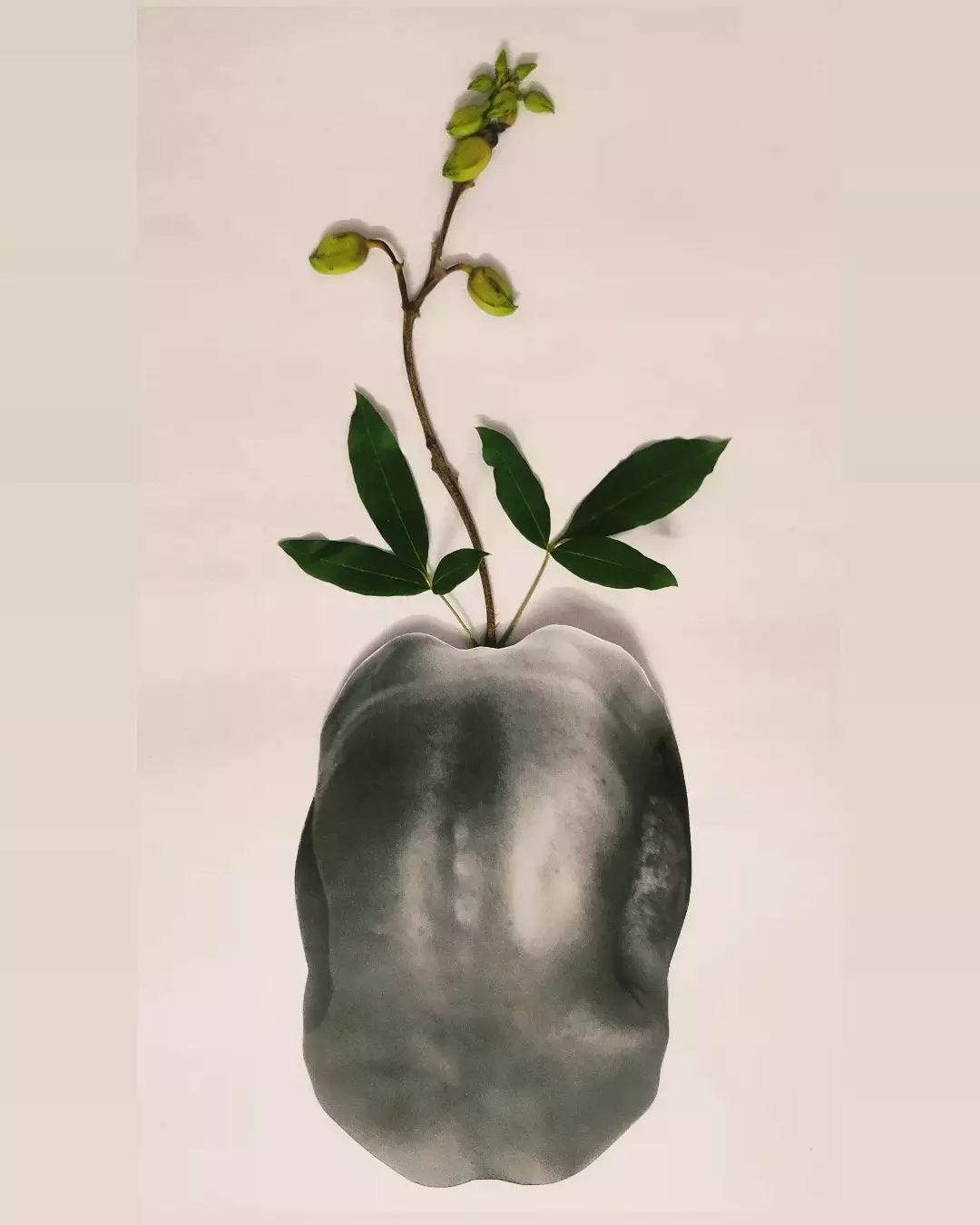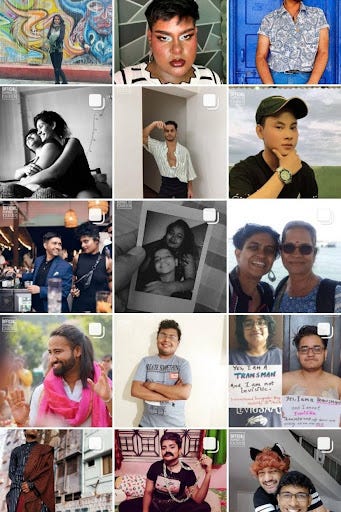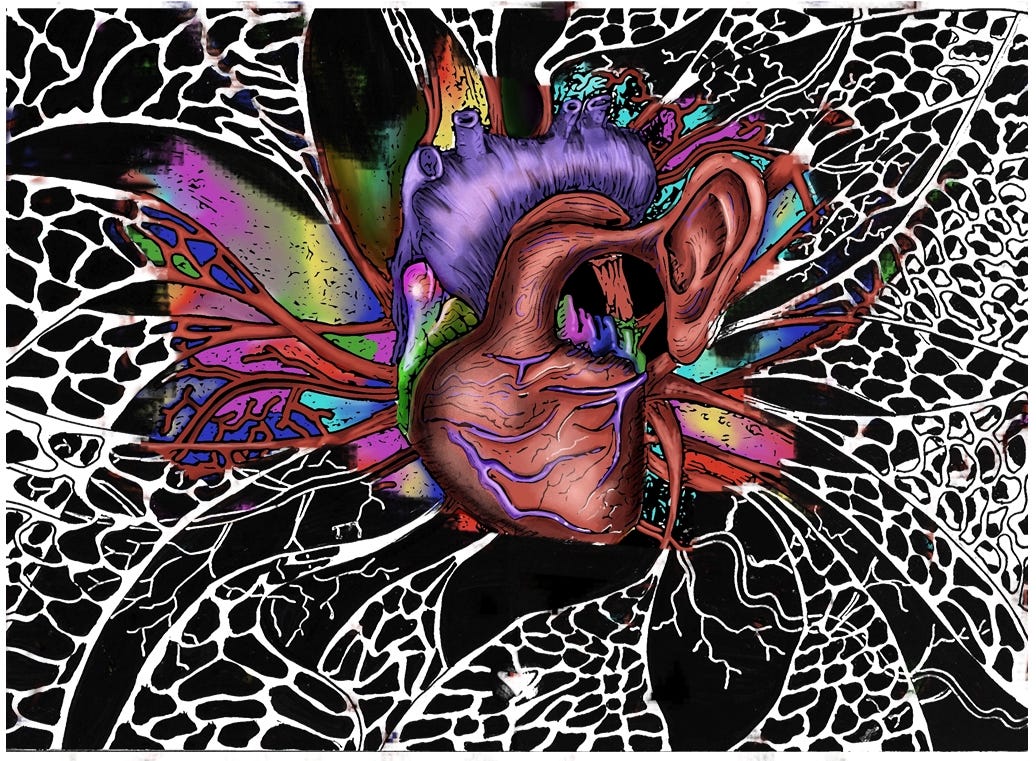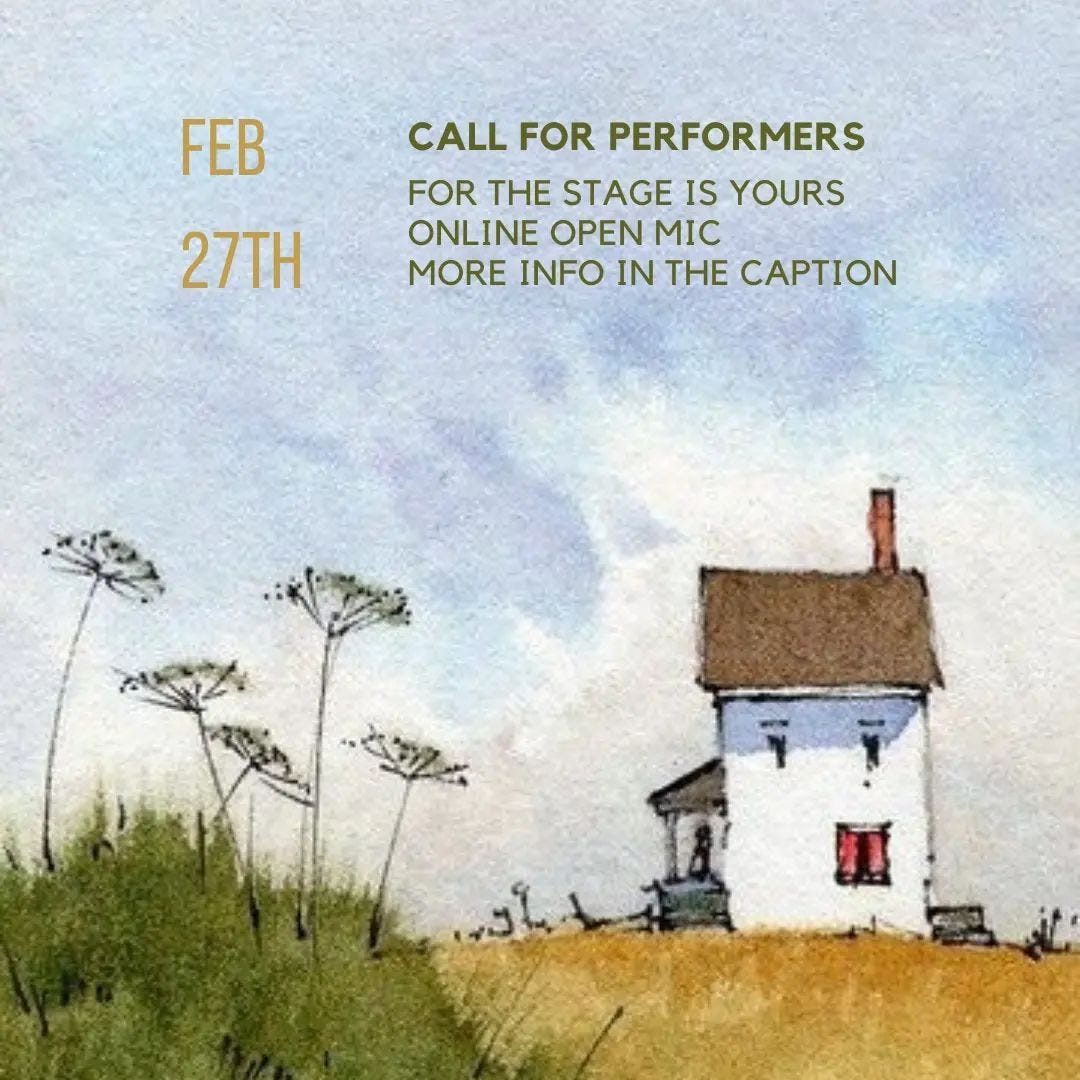Queerness in India, Art and behind
One common argument being used for the inability to identify queerness is its overt absence from the different walks of life and society.
In this post-modern, liberalized, corporatized and commercialized world, how do we make sense of queerness around, but not limited to, our Indianness? Should we contextualize it? Do we really need to? Yes, this is the only way to take our identity and language back from the colonizers. By making our marginalized otherness so evident that it becomes almost impossible for them to look away and to not take notice of us. By showing them, in any and every way possible, that our sexuality is one part of our individuality and not the other way around. That we, as a person, come first and then our sexuality. To make them see us beyond our ‘coming out’ stories.
One common argument being used for the inability to identify queerness is its overt absence from the different walks of life and society. Since we have been invisiblized for hundreds of years, we couldn’t be seen openly before. But, now we are here, showing our rainbow hearts on our sleeves, kissing our beloveds, resisting and thriving. You see, it’s always been about seeing and looking. It’s non-negotiable now, to see from other perspectives because that will enable them to accept queerness, and make space for its accommodation in co-existence with heteronormativity. Seeing two boys wearing flowers in their ears and passing on a smile in their direction; not introducing that friend of yours as ‘my gay friend’; asking someone’s pronouns and using them mindfully; ignoring binaries and thinking about fluidity at every instance.
This new curation of artworks, from different Indian queer artists, navigate through multiplicities and complexities of what it means to be a queer in India today; bares down the vulnerability and strength of being different; provides a lens on a wider spectrum of rage and tenderness, longing and loving, politics and civics, and the incomprehensible and immeasurable sea of emotions that exists within us. Take this wildly insightful and beautifully audacious ride with us.
1. People forget the human behind this sexuality by Abhinav Dasgupta
Peek into my diary entry from last night and you’ll find a whispered debate that I had with the moon when the stars slept on her shoulder I asked her that most days I feel forgotten that most days my feelings are forgotten and I cease to be flesh and blood and all things that can be broken and hurt i cease to be all things red and painful and black and suddenly i am intangible and I am a concept Rather a cause to be supported or rebelled against I asked the moon if she’s ever seen a rainbow and she shooks her head and I told her that there is one that I wear like a necklace but lately it feels akin to a choker occluding all my breath with the weight of all those news channels full of screaming voices and what they associate with it this or that and here or there she told me that it must be a noose then tightening and draining me of my humanity and I agree with her because somedays people forget the human behind this sexuality because most days people search for a brain between my legs and a voice that comes only when a man walks by I am a boy who also has preferences and not the other way around I am not just the argument you had with a homophobic friend yesterday or a law that was passed I am beautiful like that but I’m also beyond that I am a person you embrace and an overflowing bucket of feelings other than just love and lust It is something i am but its not the only thing I am The moon smiled sadly and said that she wished that the rainbow colouring me was less grey and less encapsulating and shone a little just a little brighter for me that is where the diary entry and my plea ends you can close the book now and I hope you see me for more than just a single word amongst all the poems written on my skin.
2. History and Memory by Aditya Vikram
My aching chest is a stranger in my father's arms. His taut back is a bark, full of scars I do not know how to read. He rustles in gibberish when he sleeps. If you split open a tree, it turns into dried pieces of history. They say I have my father's eyes. But ever since I refused to be a man, I borrowed nothing. Not his cackle, not the silhouette of him against the night, coming home. Not his tight shoulders, bundles of lost sleep. Not even his coarse hands, or heavy silences. In running away from him I have come so far that I can no longer hold even his memory. And what do I do with history?
3. A Street Full of Desire by Anureet Watta
It's June and the editor of the magazine which-likes-to-talk-about-issues-that-matter-but- THERE-IS-NO-NEED-TO-GET-POLITICS-INVOLVED tells me my piece is always angry and, “the LGBTQIA+ community is now liberated, Whatever they want, they have, What else could they ask for? To kiss on the street?" No, I don't want to kiss my love on the street, not now, not when homophobia exits through the backdoor, and heteronormativity disappears like a rainbow in January or fascism in 1945, it doesn't. I can't kiss my love on the street, because she might notice the bruises on my heart from beating too loud, might notice I tremble too much, might notice I'm bringing an earthquake on the pavement. We've practised for storerooms and cramped closets, even when we are left with so much sky, it might take a while for us to wring our legs and stand straight, you see once there was a queer girl whose house shrunk around her, when she said she wanted to kiss her love on the street. How do you hide in so much light? How do you feel safe in a place that once wanted you dead? Do sidewalks not hold memories? I can't kiss my love on the street because the footpath still smells of blood, can't forget that on another day, a body dismantled here in the hands of hate and this spot went from grey to red to grey and no one noticed. I want to kiss my love on the street but won't even if I feel safe; What is safe in the hands of the police, that cages our trans sisters for their sparkle, that allows for pride inside chalk lines and barricades, What is pride if there is a time and venue to be proud? If I kiss my love on the street even when no one minds, I'll still think of the decades' old TV show where they kiss to the sound of recorded laughter, I do not know how to wear off the feeling of being a joke. The metro station cameras turn their plastic necks the other way when another queer body disappears, the railings of these monuments have never caught queer people falling to their deaths from loneliness. trust the streetlights to keep queer people in the dark the roads to go every which way but home, I think I want so much more than to just kiss my love on the street
4. The Secret of She who Strokes the Body to Strike a Flame by Aadi, Translated by Sonya J Nair
Mother never loved any one after Father died. Even Roychen’s stance, with his Lungi doubled up has not made her blush. She covered her dark breasts with the darkest of bat-sieved nights. Never did shefling boiling water at gazes that peeped through unhinged doors and windows. When father pounded her, it was not she who puked and chased, hurling abuse at others. Occasionally, she gathers up her hair and shows her stinking armpits. and shows off the lice infestation on her head. Stuck to the rusted frame of the door, she would watch the construction of the road till the day’s work was done. And then show that the urine she held back till then was yellow. She would show that her sun touched breasts were black and hard like rocks. She would also show how a well-aimed kick had clotted the blood in her navel. Mother hasn’t loved men after Father died. She who pours tar on roads and rolls the dirt from her armpits into her sockets, her lips are salty. She who lays floors of cowdung, picks the lice off her head and laughs out loud. Their fingers colured with the waters of love. She who cleans the floor, in her arrogance. touches those black breasts and gives colour to water. In turn, her body is darker now. She who tends to the hearth or has birthed eight, sleep with mother “mine of mine”-they hold her tight. A breathless call in the language of love. The men lined up outside cannot bear this. They show their hate by burning down the hut. Maddened by fury, they lift up their Mundu, show their hairy legs Meanwhile, Mother isn’t yet done kissing. Like her who strokes her body and strikes a flame, Mother pretends to not notice anything. She looks inward only upon the sea that glitters. Actually, even before Father died, Mother never loved men.
5. Mujh se mere naam ne ye kya kiya by Aaditya Pandey
It has been said many times before the only meaningful way we know to materialize is to pass on the name so I traffic in the web of amorphous biochemical and electrical impulses to understand why I was given the name of a mythical hindu god who cursed his son to turn queer what has been attempted to emphasize here: the curse, cursed or the curser? the implications of relevance of this myth should be argued but cannot be dismissed especially when the palpable dissonance of one’s ideal beliefs have always lingered amidst the smog of camphor and the scent of sandalwood I’ve often found myself engulfed in the quicksand of ambivalence surrounding my faith and demand a context of this forlorn controversy but it was never provided never accounted for through the destructive disposition of time the mechanics of a devotional fraud has been exposed to me which seeks to philosophically politicize and erase every otherness of existence in the name of religion I’ll never make peace with my name even though I have to accept it’s mine and always will be I have to respond to it whenever someone calls me that without thinking of the cruelty it carries I have to spell it out and write it down when asked for because it won’t leave me because I can’t run away from it.
The subject of the true representation of queerness in cinema is a tricky one. One must not forget that the various industries and production houses that have created some of the wonderful cinema of our times have never been welcoming to queer artists and storytellers. However, the only way to truly represent queer people is, by collaborating with them and giving them decision-making positions in the project; by finding and casting queer actors into the roles; and also by hiring queer technicians and other crew members. So that on-screen representation can translate into real empowerment off the screen.
Interestingly, Queer Columbian author Manuel Betancourt wrote in an essay in Film Comment, “Queer cinema is not universal. Nevertheless, the question of how to reconcile the specificity of queer storytelling with the universalizing effect that cinema can perform is at the heart of its project.” What he said was a possible answer to the representation debate. That one might not be able to employ queer people in their projects due to various reasons, but they must not compromise with the sincerity, authenticity, pureness and genuineness of their subject. That has proven well for a few projects that despite any major or no involvement from queer people were able to present them with sensitivity and honesty. We have brought three such films whose resonance with queer realities is impeccable and have touched many queer lives. Read their analysis below.
अलीगढ़ - रूढ़ियों और सामाजिक पाखंड की सच्ची तस्वीर
अलीगढ़ फ़िल्म के दृश्यों के पीछे की पड़ताल में जायें तो हम पायेंगे कि मनोज बाजपेयी के अभिनय द्वारा जो व्यक्ति हमारे समक्ष आया है, वह मानसिक स्तर पर हिचकिचाहट से भरा हुआ, काँपता शरीर, अकेलापन, उदास आँखें और अपनी शारीरिक बनावट पर चुप्पी साधे संतुष्ट । जिस समाज में समलैंगिकता को अपराध के रूप में देखा जा रहा हो, ऐसे में वह बस अपने में रहना चाहता है। इसी दौरान उसकी निजता को उछाला जाता है, जिससे वह नितांत लज्जारुण अनुभव करता है। उसके घर की बिजली काट दी गयी है, असहाय स्थितियों में बाहरी की तरह उसके साथ व्यवहार किया जा रहा है, और वह परास्त हो किसी तरह निर्वाह किए जा रहा है। श्रीनिवास जीवन का प्रतिनिधित्व करते मर्म को साधे एक संवेदनशील कवि भी थे। उनके भीतर वह शायद उनका भावुक कला हृदय ही रहा होगा जिसने उन्हें इतनी जटिल स्थितियों में भी सरल बनाये रखा। पर उनके विपक्ष में जो वैचारिक वर्ग था, वह सभी नाज़ुक पक्षों से पृथक अपनी अड़ियल विचारधारा के प्रति तत्पर था। ज़ाहिर है इन सभी घटनाओं से श्रीनिवास बड़ी गहराई तक आहत अनुभव कर रहे थे। दो व्यक्ति अपने एकांत में, क्या करते हैं क्या नही, या फ़र्ज़ कीजिए आप अपने घर के भीतर क्या करते हैं, यह अधिकार आपका है। परंतु हमारे यहाँ, लोग स्वयं चाहे मानवता के पालन में धरा के नीचे धँसे हों, मगर अकारण रूढ़ियों को बचाए रखने के लिए दूसरे की शांति भंग करने से भी नही चूकते।
देवांश एकांत द्वारा लिखित पूरा लेख यहाँ पढ़ें
मूनलाइट - स्वयं की ख़ोज
मूनलाइट फ़िल्म में मुख्य पात्र शिरॉन को जीवन में तीन अलग़-अलग़ समय पर चित्रित किया गया है। हर हिस्सा शिरॉन की विशिष्ट प्रकृति के बारे में अपनी बात रखता है। पूरी फ़िल्म के दौरान विभिन्न अनुभवों से गुज़रते हुए शिरॉन की अपने शरीर और लैंगिकता के प्रति सजगता तो बढ़ती है लेकिन उसका अंतस हमेशा स्वयं की पहचान के साथ द्वन्द में रहता है। मूनलाइट अश्वेत युवाओं पर प्रक्षेपित विषाक्त मर्दानगी के विरुद्ध उचित सवाल उठाती है और इन सब के बावज़ूद एक मानवीय अस्तित्व अपने बहुरंगी वैविध्य और समाज-निर्धारित रूढ़ियों से निरंतर द्वंद के साथ जिस तरह विकसित होता है उस का एक सटीक बयान है।
शिवम तोमर द्वारा लिखित पूरा लेख यहाँ पढ़ें
Portrait of a Lady on Fire - An 18th Century Art in Motion
Written and directed by Céline Sciamma, the film captures the essence of queer women’s desire in a way many other films have tried and failed. Silence is used in the same way negative space is on a canvas. Through portraiture and conversation, Marianne and Héloïse draft and smudge and attempt again to understand one another, to build an accurate representation of the other that they can carry onward, despite its impermanence. The answer they come up with tells us what queer people have been quietly telling us forever: that their lives have always been present, even at times where their existence has been vehemently denied. Even in the face of a suffocating culture of repression, there are ways to be seen by one another, even if there aren’t ways to openly exist.
Read the complete article by Aishwarya Roy here
The thing with being privileged is that you get access to any kind of existing resource before the ones who do not enjoy the same kind of privilege do. So when the digital boom happened, like the real-life domains cis-het people took up places there as well and queers were sidelined yet again. Later, in Tiktok frenzied, Instagram filters applied, and aesthetically incentivized online presence cis-het people started to define beauty standards and gatekeep the same with the soft power of social media. It created a sort of void where other marginalized communities were inevitably excluded.
As technology started to become more affordable, these platforms also started becoming less unwelcoming and more accommodating. This allowed many queer thinkers and creators to come up with digital spaces that gave the other queer people opportunities to disrupt the mainstream ideas of not only unhealthy and unattainable beauty and body standards, but also to expose how hollow and harmful these notions are, in fact.
Official Humans of Queer created one such platform where queer people could share their stories, in their own words and on their own terms. It has been cataloguing stories of beauty and joy, hardships and struggles, acceptances and rejections, and of people who are unabashedly and unashamedly queer.
The Story of Official Humans of Queer, in a Conversation With Yash Sharma
The idea of Official Humans of Queer came from the idea of an individual's journey. Being a queer oriented digital space, it has the space for all the fellow queer folks to share about their life. It started in June 2020, with Yash Sharma, as a founder and Geetanjali Bhilwara as a co-founder. The idea was to give space and collect all the possible queer stories from India and worldwide.
It was started by the acceptance of myself from my family. Also, to present stories is to make people aware that we do exist. We started with only a few stories and now we are at almost 500 stories with 10.4k followers on Instagram. When I started this page, I was skeptical about getting this huge response and especially the positive responses. But out of every 10 stories, 7 are positive. These somehow relate to the way forward of society. Each and every story on the page has an individual journey with one thing in common- acceptance and that is the biggest part of any queer person. We have done, several webinars on mental health, sexual health, etc. We have recently hosted a queer film festival, Queerflix, in which we showcased 20 queer-themed movies. We are currently shooting a documentary also. We have been associated with several organizations as their promoting partners. The idea is just to present as many queer stories as possible in any form.
The journey that started with 2-3 people in a team and 10 stories, is now on 20-30 people in a team with n number of stories. When I receive texts like, hey because of you, I accepted myself or I came out to my family and friends, that makes me smile. It's a small step towards acceptance and making a safe space. There's one more interesting point we haven't faced any kind of trolling yet. We have received positive responses only. In future, I would like to work on sex and gender education through this medium.
If people start learning and connecting with the stories, they will be able to accept people around them. It's about learning and unlearning and that's what we are trying. It's about, if someone in future asks you, where are these people? I can't see them? You can show them OHOQ. It's about making a family and letting people know before Queer we are Human and we are equal and we exist.
There are many ways to see art, and consequently, many ways to describe it. The same applies to Queer art as well. It is personal and political, disruptive and comforting, outrageous and soothing, and so much more. In the below showcase, we have handpicked artworks that supplant traditional forms, genres, aesthetics, and structures, and aim to exhibit diverse manifestations of queerness.
Queer Art Showcase
This is the end of the first of the two-part issue of our newsletter in which we have attempted to put the spotlight on some of the talented queer artists of our country who remain underappreciated and unrecognized despite being amazing at what they do. We hope these pieces of art will enchant and charm you and will make you think and observe people around you with care and compassion. We will continue to celebrate more artists and their poems, articles and art in the next instalment of the February edition of this newsletter.
- Team Poems India
Register for Poems India’s Online Open Mic on 27th Feb here
Contributors and Curators: Aaditya Pandey, Shivam Tomar, Aishwarya Roy, Devansh Dixit
















Thank you so much Poems India for giving me the opportunity to sharing my words and my art with such amazing bunch of artists. ❤